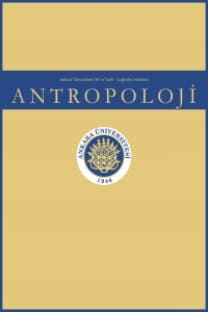YANGIN OLGULARI ve ADLİ ANTROPOLOJİ
Yangınlar, adli bilimler açısından önemli yere sahip olgular içermektedir. Bu türolgularda interdisipliner çalışmalar aracılığıyla olay yerinden elde edilen bulgulardeğerlendirilmeli ve laboratuvar analizleriyle karşılaştırılmalıdır. Böylece vakaanalizleridaha güvenilir şekilde yapılmakta ve kimliklendirme çalışmalarına katkıdabulunmaktadır.Kemik ve dişler diğer iskelet bileşenlerine göre termal etkenlere karşı dahadayanıklıdır. Bu nedenle yangın olgularında temel olarak adli antropoloji ve adliodontoloji yaklaşımlarından yararlanılmaktadır. Adli antropoloji, termal etkenlerinvücutta yarattığı değişimleri adli tıp ve adli patoloji gibi bilim dallarından yardımalarak tanımlamaktadır. Buna ek olarak iskeletlerdeki travma tiplerini tanımlayarakyangın olgusunun kasıtlı olup olmadığını belirlemeye yardımcı olmaktadır. Ayrıcaadli antropoloji, iskelet üzerinde kimliklendirmeye yardımcı olabilecek patoloji,anomali ve varyasyon gibi göstergeleri belirlemekte; yaş ve cinsiyet gibi ölçütlerideğerlendirerek biyolojik profil oluşturulmasını sağlamaktadır.Kemikler, yangın olgularında ulaşılabilen temel kalıntılardan olduğu için adliantropolojinin bu tür olgularda aktif bir biçimde yer alması gerekmektedir. Adliantropoloji, yangın olgularında adli bilimlerin farklı disiplinleriyle birlikteçalışmalı, farklı nitelikteki yangın olguları için çeşitli teknikler test edilerek dahagüvenilir sonuçlar için örnek modeller oluşturulmalıdır.
Cases of Fire and Forensic Anthropology
The fires include facts which have important points in terms of forensic sciences.In such cases, findings obtained from the site through interdisciplinary studies should be assessed and compared with laboratory analyses.Thus, the cases are analyzed more reliably and they contribute to identification studies. Bones and teeth are more resistant to thermal effects than other skeletal components. For this reason, forensic anthropology and forensic odontology approaches are mainly used in fire cases. Forensic anthropology describes the changes in the body caused by thermal factors with the help of scientific branches, such as forensic medicine and forensic pathology. Additionaly, this subdiscipline identifies trauma types in skeletons to help determine whether the emergence of a fire is deliberate. It also defines indicators such as pathology, anomaly and variation that can help to identify the skeleton and it provides help for composing a biological profile by evaluating criteria such as age and sex. Bones are among the basic remnants that can be reached in fire cases. For this reason, forensic anthropology should be actively considered in such cases. Forensic anthropology should work with different disciplines of forensic sciences. Various techniques should be tested for different types of fire cases. In addition, sample models should be created for more reliable results.
___
- Arora, A.K., Gupta, P., Kapoor, S.S. ve Mahajan, S. (2010). An Analytic Review of Burnt Bones in Medicolegal Sciences, Journal of Punjab Academy of Forensic Medicine & Toxicology, 10, 31-36.
- Baby, R. S. (1954).Hopewell cremation practices. Columbus: Ohio Historical Society.
- Black, S. ve Ferguson, E. (2011).Forensic Anthropology: 2000 to 2010. CRC Press.
- Bytheway, J. A., Larison, N. C. ve Ross, A. H. (2014). Recognition of Atypical Burn Patterns and Pre-cremation Blunt Force Trauma Observed on Human Remains in Two Forensic Cases in the United States, Anthropology,2,136.
- Dirkmaat, D. C. ve Adovasio, J. M. (1997).“The Role of Archaeology in the Recovery and Interpretation of Human Remains an Outdoor Forensic Setting”. Forensic Taphonomy: The Postmortem Fate of Human Remains. W. D. Haglund ve M. H. Sorg (Ed.), pp. 39-64, CRC Press, Boca Raton, FL.
- Dirkmaat, D. C. (1998).Forensic Anthropological Recovery and Interpretation of the Fire Victim.50th Annual Meeting of the American Academy of Forensic Sciences. San Francisco, CA.
- Efford,M. (2016). The Implications of Thermogenic Modification for Anthropological Recovery of Burned Bone, The Arbutus Review, 7, 1.
- Fairgrieve, S. I. (2007).Forensic Cremation Recovery and Analysis. CRC Press.
- Haglund, W. D. ve Sorg, M. H. (2001).Advances in Forensic Taphonomy: Method, Theory and Archaelogical Perspectives. CRC Press.
- Houck, M. M. ve Siegel, J. A. (2016).Adli Bilimlerin Temelleri, İkinci Basımdan Çeviri. Y. Doğan (Çev. Ed.), Nobel Akademik Yayıncılık.
- Imaizumi, K. (2015).Forensic Investigation of Burnt Human Remains.Research and Reports in Forensic Medical Science, 5,67-74.
- İşcan, M. Y. ve Steyn, M. (2013).The Human Skeleton in Forensic Medicine, Third Edition. Charles C Thomas.
- King, C. G. ve King, S. (1989).The Archaeology of Fire Investigation.Fire Engineering, 142(6), 70-74.
- Krogman, W. B. ve İşcan, M. Y. (1986). The Human Skeleton in Forensic Medicine, Second Edition. Charles C Thomas.
- Maples, W. R. (1997). Forensic Anthropology. Forensic Dentistry.P. Stimson ve C. A. Mertz (Ed.), pp. 66-81, CRC Press, Boca Raton, FL.
- Maples, W. R. ve Browning, M. (2004). Dead Men Do Tell Tales: The Strange and Fascinating Cases of a Forensic Anthropologist. Saga Publications.
- Porta, D., Poppa, P., Regazzola, V., Gibelli, D., Schillaci, D. R., Amadasi, A., Magli, F. ve Cattaneo, C. (2013). The importance of an anthropological scene of crime investigation in the case of burnt remains in vehicles: 3 case studies, The American Journal of Forensic Medicine and Pathology, 34(3), 195-200.
- Shipman, P., Foster, G. ve Schoeninger, M. (1984). Burnt bones and teeth: an experimental study of color, morphology, crystal structure and shrinkage.Journal of Archaeological Science,2, 307 – 325.
- Symes, S. A., Smith, O. C., Berryman, H. E., Peters, C., Rochhold, L., Haun,S., Francisco, J. ve Sutton, T. (1996). Bones: Bullets, burns, bludgeons, blunders and why, Bone trauma workshop. 48th Annual Meeting of the American Academy of Forensic Sciences, Nashville, TN. Proceedings of the American Academy of Forensic Sciences. Colorado Springs.
- Symes, S. A., Rainwater, C. W., Chapman, E. M., Gipson, D. R. ve Piper, A. L. (2008). “Patterned thermal destruction of human remains in a forensic setting”. The analysis of burned human remains. C. W. Schmidt ve S. A. Symes (Ed.), pp. 15-54, London, Academic Press.
- Thomas, P. (2003).Forensic Anthropology: The Growing Science of Talking Bones. Facts On File Inc.
- Thompson, T. J. U. (2009).“Burned human remains”. Handbook of forensic anthropology and archaeology. S. Blau veD. H. Ubelaker (Ed.), pp. 295-303, Walnut Creek: Left Coast Press.
- Ubelaker, D. H. (1989).Human Skeletal Remains: Excavation, Analysis, Interpretation, Second Edition. Taraxacum, Washington, D.C.
- Ubelaker, D. H. (2009). The forensic evaluation of burned skeletal remains: A synthesis, Forensic Science International, 183, 1-5.
- ISSN: 0378-2891
- Yayın Aralığı: Yılda 2 Sayı
- Başlangıç: 1963
- Yayıncı: Ankara Üniversitesi Basımevi
